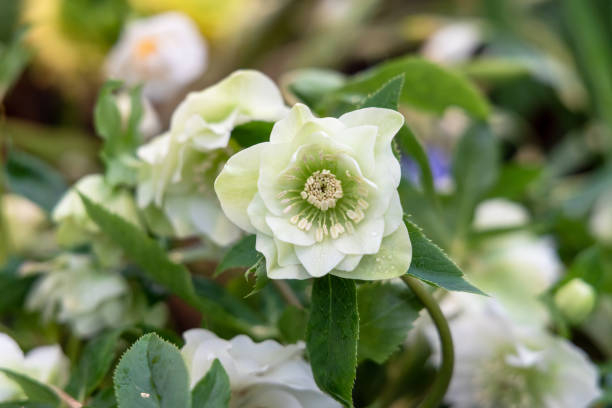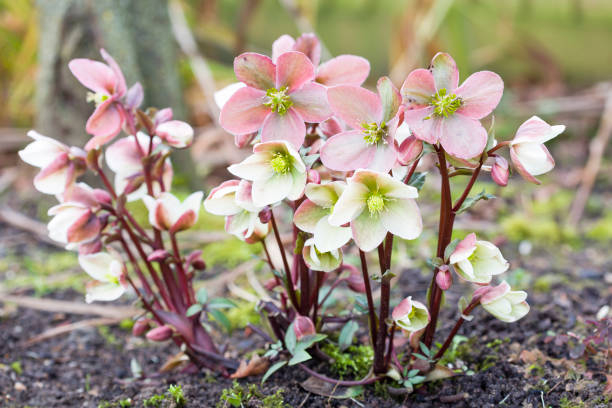Christmas rose

Christmas rose (Helleborus niger), also known as winter rose or black hellebore, is a tiny toxic perennial herb of the Ranunculaceae family that blooms from late October to early spring, frequently in the snow. It has evergreen compound leaves with seven or more leaflets arranged like the fingers of a hand that grow directly from the plant's top. The beautiful blooms, with five colored sepals, are 5 to 7.5 cm (2 to 3 inches) wide, white to pinkish green, and occur in winter, typically at Christmas, in mild regions, and late spring in colder countries. Improved cultivars include "Altifolius", which is somewhat taller, and "Potter's Wheel", which has wider sepals.
In warm climes, the Christmas rose thrives in wet soil and moderate shade, or in protected settings in colder climates, and it is occasionally induced to bloom in a greenhouse. In Europe, the closely related Lenten rose (Helleborus orientalis), which blooms later and has cream to purple flowers in clusters of two to six, is popular.b
Christmas rose bushes appreciate a shaded and protected garden area. Many gardeners also discover that the plants are picky about soil pH, preferring neutral or slightly alkaline soil. These growth conditions for Christmas roses can be obtained by adding soil additives such as lime. Planting areas should be well-drained and have enough of air movement. Once planted, Christmas rose maintenance is minimal. Where the growth circumstances for Christmas roses are very severe, the leaves may exhibit symptoms of damage during the coldest months of the year. Damaged leaves can be removed to create place for new growth, which will restart when the time is perfect. Exposure to direct sunshine can also cause leaf damage.









